Joint Replacement
Hip replacement
Hemiarthroplasty, Total Hip Replacement
Knee replacement
Unicondylar and Total Knee Replacement
Shoulder replacement
Hemi, Total and Reverse Shoulder Arthroplasty
Hip Replacement
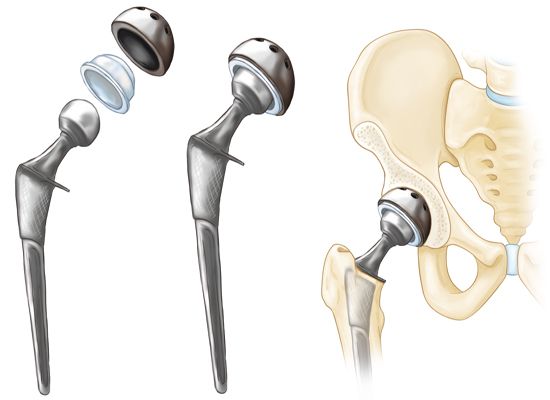
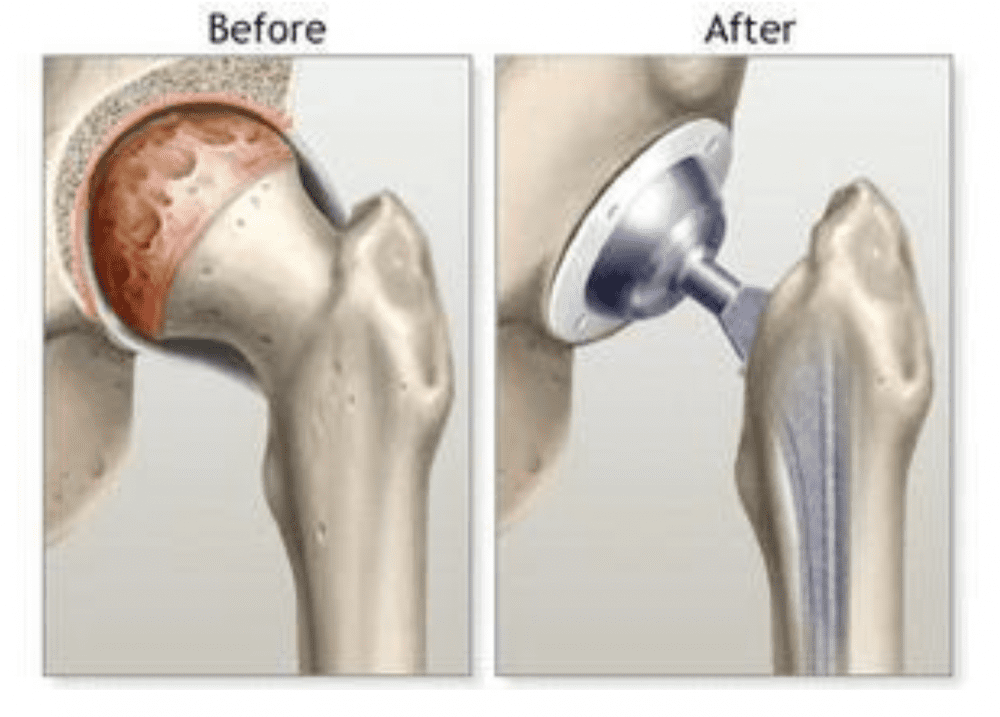
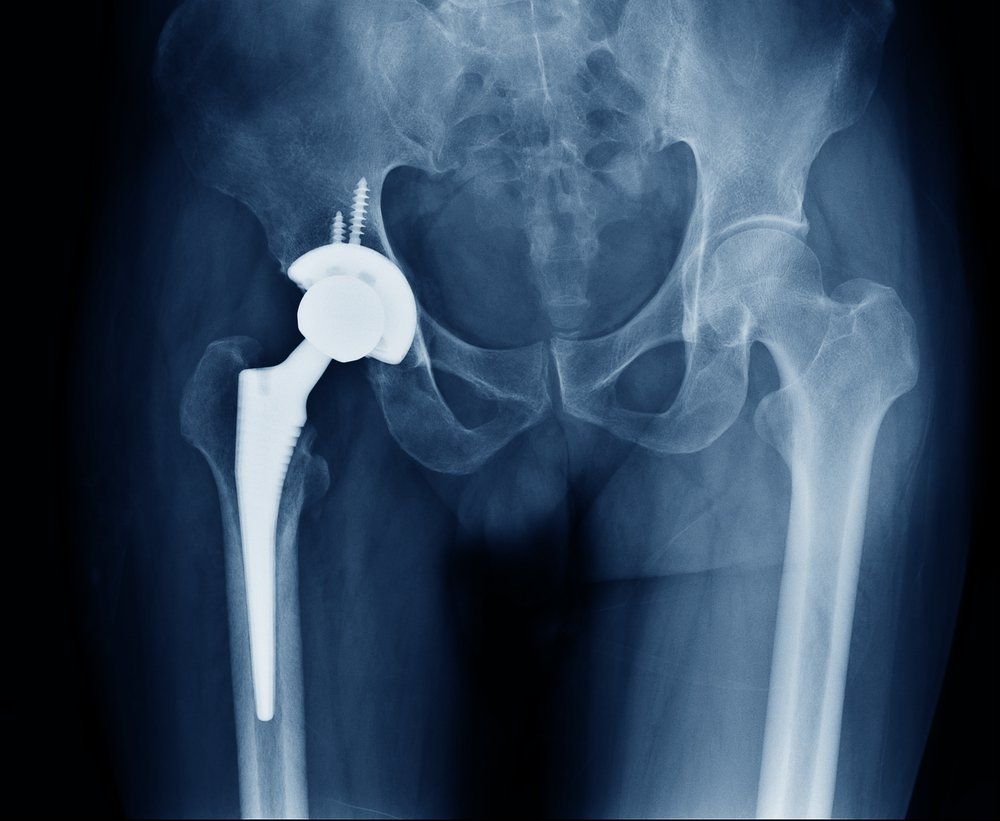
Hip replacement surgery (Total hip arthroplasty) is one of the most commonly done procedure for long term hip pain in elderly people. Its usually done when the hip pain interferes with daily activities and nonsurgical treatments haven’t helped or are no longer effective. Arthritis damage is the most common reason to need hip replacement.
During hip replacement, the surgeon removes the damaged sections of your hip joint and replaces them with parts usually constructed of metal, ceramic and very hard plastic. This artificial joint (prosthesis) helps reduce pain and improve function.
When is the surgery performed?
Conditions that can damage the hip joint, sometimes making hip replacement surgery necessary, include:
- Osteoarthritis
- Rheumatoid arthritis
- Osteonecrosis
- Fracture Neck of femur
Advantages of hip Replacement:
- High rewarding surgery with very good success rate
- Early weight bearing
- Improvement in active lifestyle
- The surgery is performed under spinal anasthesia.
- Incision is made either at the back, sides or in the from of your hip joint depending on the surgeons preferance.
- The damaged or diseased hip bone is resected and the joint is prepared.
- The joint prosthesis – a cup and a stem is implanted with or without bone cement.
- Stability of the joint and limb lenght is assessed.
- Wound is closed with sutures
Brace: Nil
Knee Replacement
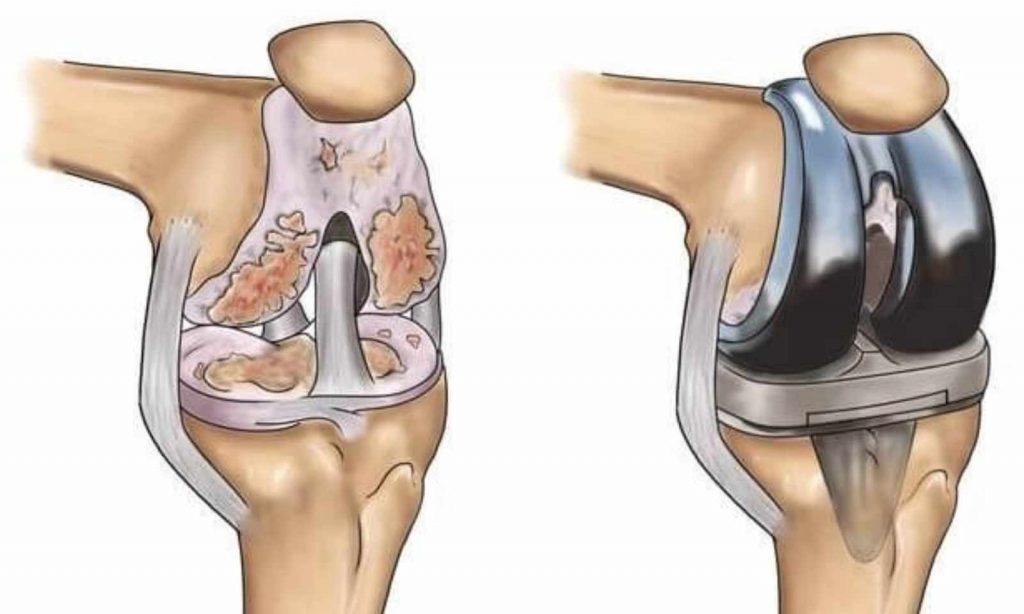
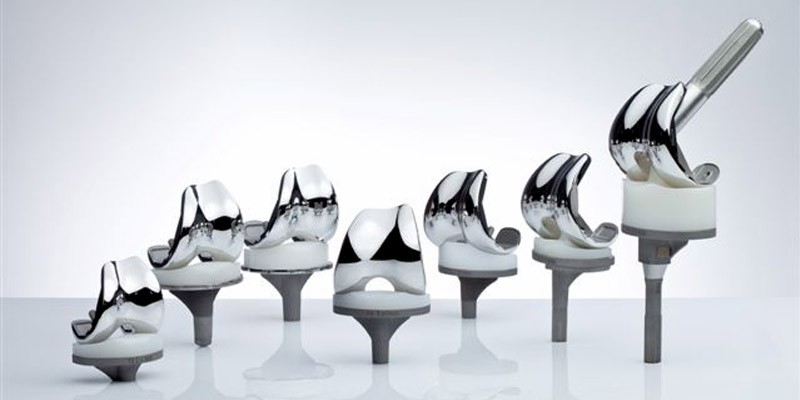
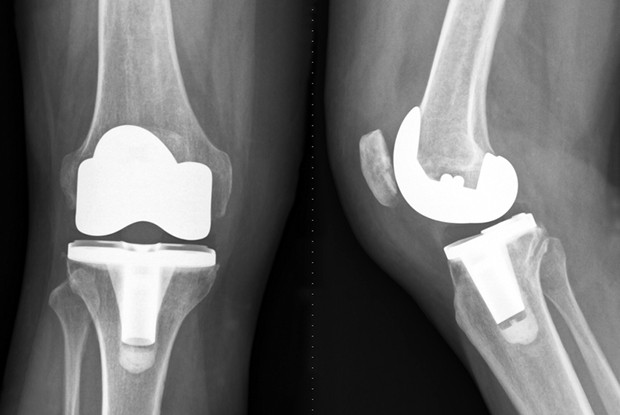
Knee replacement surgery — also known as knee arthroplasty can help relieve pain and restore function in severely diseased knee joints. The procedure involves cutting away damaged bone and cartilage from the thighbone, shinbone and kneecap and replacing it with an artificial joint (prosthesis) made of metal alloys, high-grade plastics and polymers.
The most common reason for knee replacement surgery is to relieve severe pain caused by osteoarthritis. People who need knee replacement surgery usually have problems walking, climbing stairs, and getting in and out of chairs. Some also have knee pain at rest.
When is the surgery performed?
Conditions that can damage the hip joint, such as:
- Osteoarthritis
- Rheumatoid arthritis
Advantages of Knee Replacement:
- High rewarding surgery with very good success rate
- Early weight bearing
- Improvement in active lifestyle
- The surgery is performed under spinal anasthesia.
- Incision is made in the front of the knee.
- The patella bone is everted to the side and the knee joint is visualized
- Specialized measurement instruments are used to cut the layers of both joint surfaces to recreate the joint line and knee alignment.
- The implants are fixed to the femur and tibia using bone cement.
- Stability is assessed and the wound is closed.
Knee replacement is one of the most commonly done surgery worldwide. Sometimes both the knees can be replaced in the same sitting depending on the patient and disease condition.
Brace (knee brace): 0-2 weeks
Shoulder Replacement
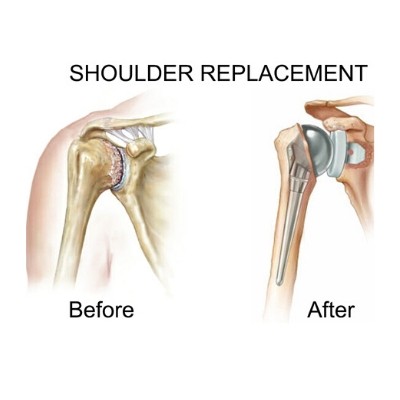
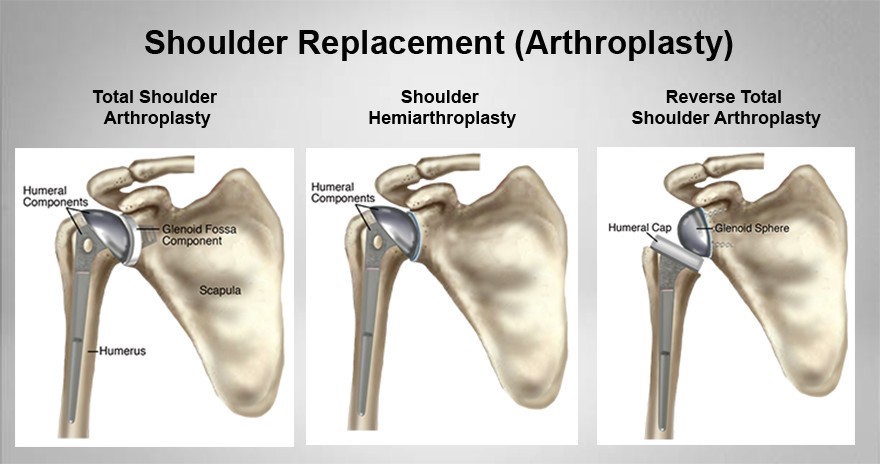
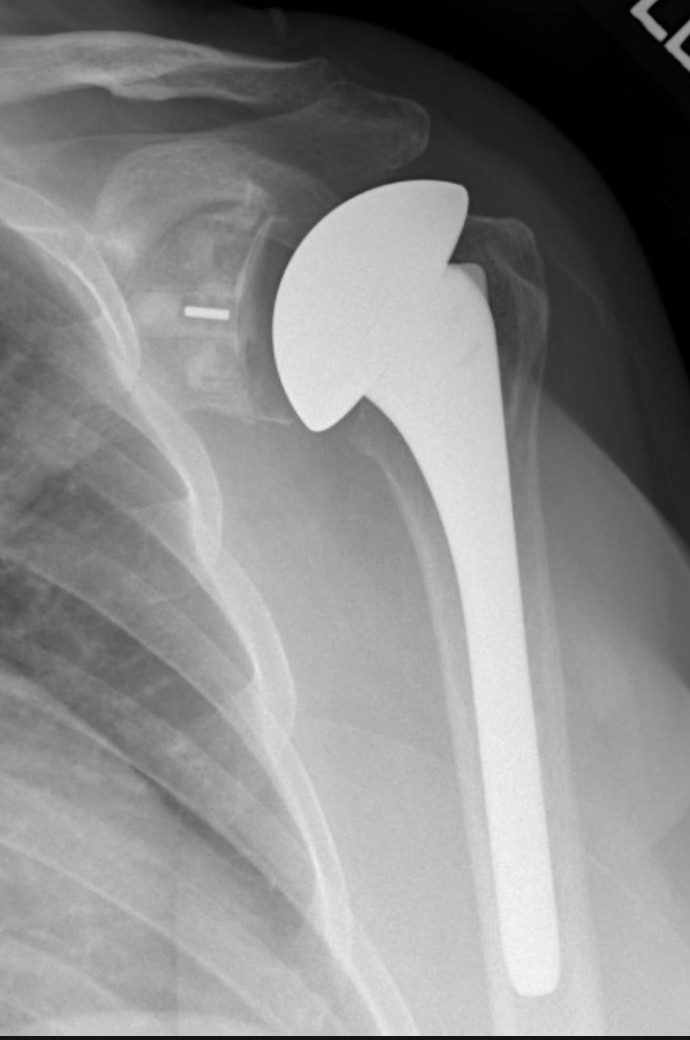
Shoulder replacement surgery is done to relieve pain and other symptoms that result from damage to the shoulder joint. The procedure involves removing damaged areas of bone in the shoulder and replacing them with implants made of metal and highly specialized plastic.
When is the surgery performed?
Conditions that can damage the hip joint, such as:
- Osteoarthritis
- Rheumatoid arthritis
- Rotator cuff arthropathy
- Severe fracture of upper arm (proximal humerus)
- Osteonecrosis
Advantages of Shoulder Replacement:
- Improves shoulder function
- Reduces pain and stiffness
Types of Shoulder Replacement:
- Hemiarthroplasty
- Total Shoulder Arthroplasty
- Reverse Shoulder Arthroplasty
- The surgery is performed under spinal anasthesia.
- Incision is made in the front of the shoulder.
- The muscles are retracted and the shoulder joint is visualized
- The joint is resected and humeral stem and glenoid cup is placed and fixed.
- Stability is assessed and the wound closed.
Brace (Arm Sling): 2-4 weeks
Spine Surgery
Surgeries of the Neck and Back
Micro-Discectomy
Removal of the Disc
Interbody Fusion
Fusing abnormal Vertebra
ACDF
Disc Surgery of the Neck
Neck Corpectomy
Vertebral Surgery of the Neck
Thorasic Corpectomy (Back)
Vertebral Surgery of the Back
Vertebroplasty
Cement Injection for Fractures
Kyphoplasty
Balloon inflation of Collapsed vertebra
Scoliosis Surgery
Scoliosis Deformity Correction
Endoscopic Surgery
Pen-hole, Key-hole Surgery
Fracture Surgery
Surgical Management of all Fractures
Plate and Screw Fixation
Fracture fixation using Plates and Screws
Intramedullary Nailing
Long rod used for Fracture fixations
Proximal Femoral Nailing
Rod fixation for Hip Fractures
K-wire fixation
Thin wire Fracture fixation
External Fixation
By Pins and rods outside the body
Joint Replacements
Arthroplasty
Hip replacement
Hemiarthroplasty, Total Hip Replacement
Knee replacement
Unicondylar and Total Knee Replacement
Shoulder replacement
Hemi, Total and Reverse Shoulder Arthroplasty

Our World, Our Vision
We at SUNDARSPINE, believe in our promise to the world to provide Free access Healthcare Education to everyone. This site is a result of years of Planning and Hardwork. We are dedicated to help in your patient experience and aspire to increase our network globally and include a complete database of all health related information and guidance. We have just begun and we have a long way to go. Thank you in being a part of Us!!
We’d love to hear from you
Have any questions, Checkout
Download a FREE Ebook
Subscribe to our news letter
